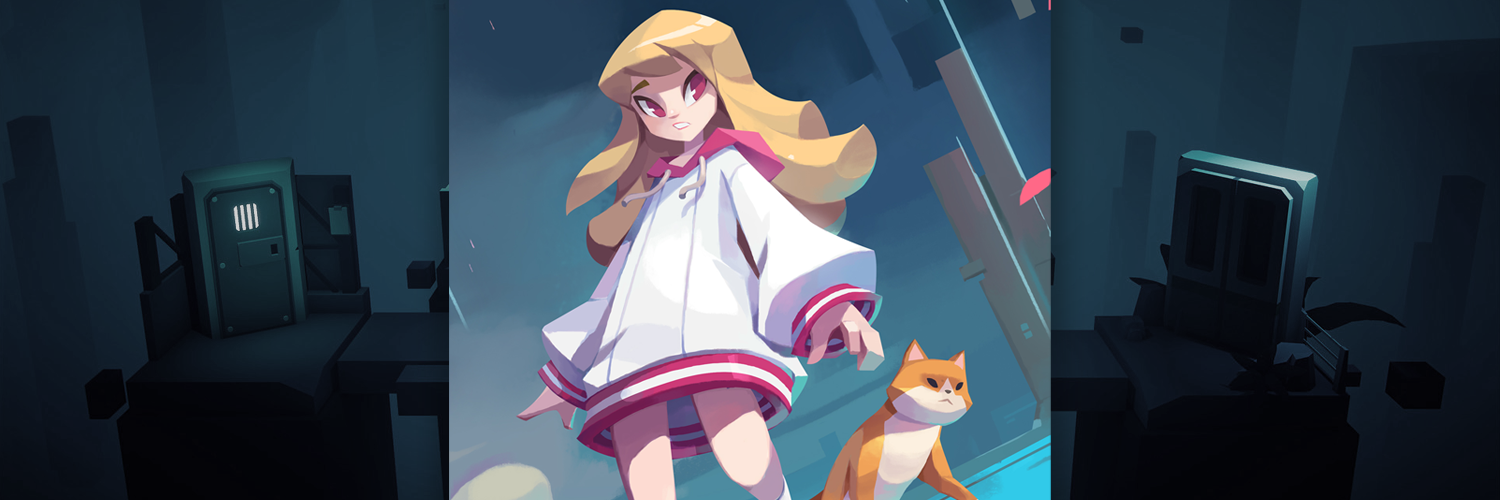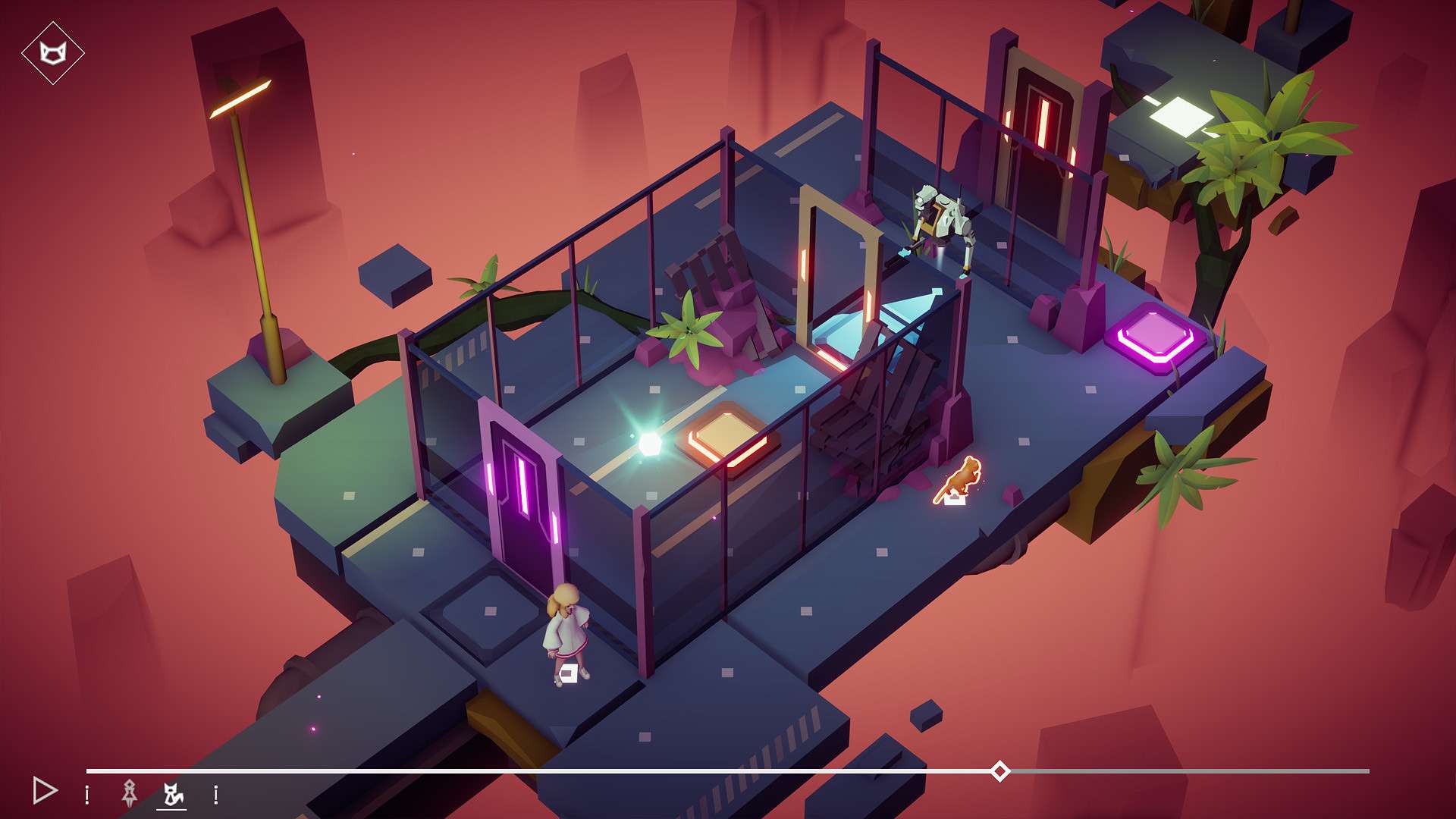
Timelie PC Review
Timelie, whose terribly witty title almost explains itself, is an isometric 3D puzzle game that is all about testing and perfecting solutions to each of the claustrophobic scenarios it throws the player into. This is done by restricting movement to a grid and allowing complete control over rewinding, or even directly scrubbing back and forth through a stage’s recorded progress bar, which gives the player the ability to sort of ‘debug’ their movements – discover where they could have performed better or tried something else all together and letting them take back over from that point, consequence-free. It’s a game about experimentation and analysis, as well as light puzzle solving, and, because of that, reminds me a lot of Rose and Time – a tiny game from 2013 that has similar rewinding mechanics. They both heavily revolve around timing, positioning, and making constant small tweaks to a character’s movements to find the perfect path through. Sadly though, on the scale of Timelie, the lack of real thoughtful puzzles quickly becomes evident as each challenge seems to become more and more focussed on minuscule trial-and-error motion tweaks in order to squeeze past guards just before they catch you in their peripheral vision.
This awkward ‘shuffling’ of movement is only exacerbated in the couple of even tighter levels that show up near the end of the game and require basically no thought besides trying each path one by one to find what sticks. One section in particular had me fooled for a good while before I accidentally passed it by harassing the robot guards in every way I could think of until I discovered I could, for some unknown reason, sneakily brush past them if they entered the room in a hurry. It was incredibly disappointing to ‘solve’. In fact, outside of the odd clever moment of having to manipulate guards onto switches or complete stages within certain limitations, such as not creating distractions by meow-ing as the cat or using the ability to rebuild broken pieces of the world as the young girl, most of the levels are about controlling doors and handling similar tight spaces.

Where the game does shine, however, apart from the seriously remarkable soundtrack and perfectly suited, equally charming art style, is when the honestly brilliant core concept is complicated a little further and allowed to flourish, especially in some of the more interesting areas that have the girl and cat teaming up. During these sections the player has to record one of the character’s movements, rewind, and then play as the other whilst the newly-recorded actions of the former character plays out. This weird sort of keeping your earlier self safe whilst also handling the current character’s problems is often a total joy. Having to covertly steal a power cube as the young girl, in order to fix a bridge; switching out to the cat who can now cross and meow, to draw a guards attention; then jumping back to the girl to take advantage of the new opening you’ve just made etc, etc, is really powerful. It’s a shame that the better of these parts are so few throughout the short five-hour story.
For an extra challenge (and to unlock the real ending), there are also relics to collect throughout the game, which are granted by discovering and adhering to some of the aforementioned limitations when solving particular levels. Those and the purple cubes, which are mandatory collectibles obtained by solving smaller puzzles that fit into the larger problem, are frequently also great examples of what Timelie could have been if it was allowed to grow into its own just a little more. Instead of using the restriction of tiny spaces to force the player down obvious routes, I think it would have benefitted from allowing more freedom to how each puzzle could be tackled. By having more going on in each scenario but also introducing more ways of manipulating the environment and inhabitants, the gameplay wouldn’t have to be focused on perfecting each microscopic move like a game of chess won through repetition and constant minor failures. Rather, we’d have some room for personality and perhaps even morality to how each trial is approached – whether through brute force, clever distraction tactics, or something entirely different.

Whilst I personally feel it falls pretty far short of the ‘Overwhelmingly Positive’ badge it has garnered on Steam, I’m still glad I got to play it – it was an enjoyable experience in an interesting genre that’s still in its infancy. Where I felt completely disconnected from the title, though, is with its story (or lack thereof). See, it comes off as fancying itself quite an epic tale with its [irritatingly] slow cutscenes and dramatic, orchestral crescendos that accompany cutscenes of a girl embracing a cat she’s known all of five minutes. A girl whose origins are completely unknown and whose purpose or powers are totally without context, in a world that is entirely unexplainable or relatable. I am still baffled why anyone would find these moments compelling or deep in any way, especially the real ending – which kind of throws a curve-ball but to no real effect. I would recommend Timelie to anyone who might find this type of experimental time-manipulation gameplay interesting but certainly not for its storytelling.
